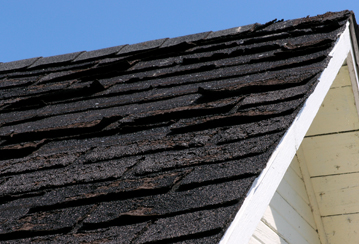News and Updates
How to prevent wind damage to your home
High winds can be a dangerous, and costly, instance of extreme weather. Consider the damage incurred by the severe spring wind storm that hit southern Ontario in May 2018, causing over $380 million in property damage.1
Though none of us can control the weather, there are some actions that home owners can take to help minimize their potential losses in the event of a wind storm.
Know your risk
It’s important to be aware of the risk level for high winds in your area, as well as of your home’s potential vulnerabilities to wind damage.
You can determine what your area’s wind damage risk is by contacting your municipality. Your municipality should also be able to provide you with a list of permits that may be required for renovations to strengthen your home’s defenses, or recommendations for home inspectors with knowledge of the area that can provide specific details on the potential susceptibilities of your home.
You should also check with your insurance broker about what types of damage are covered under your policy and what your policy’s limits are. Home insurance policies should be reviewed annually to ensure that the insurable value of your property is as accurate and up-to-date as possible. This will assure that in the event of a total loss you’ll have enough coverage to get back to where you started.
Make necessary home repairs and updates
The roof of your home is the most vulnerable element of your property when it comes to wind damage. As strong winds flow around the structure of your home, the wind stream that travels the farthest distance around your property (normally over the roof) will speed up and drop in pressure. This can generate an ‘uplift’ effect that can cause your roof to take off like a wing and detach from the remainder of the building.
The best strategy to reinforce your roof against high winds, particularly if it is old and showing signs of deterioration, is to hire a contractor to re-roof your home. The roof should be removed down to the sheathing in order to check for damage and decay, and should be replaced as needed. Make sure that you choose a roof cover that is high-wind rated.
Other common property susceptibilities to wind damage include:
- Entry doors
- Windows and sliding glass doors
- Porches and overhangs
- Garage doors
- Ridge and off-ridge vents
- Soffits (the material that bridges the gap between the roof overhang and the side of your building)
You should work with a home inspector to ensure that each of these potential points of weakness in your home is up-to-date and reinforced against high winds wherever possible.
Check your surroundings
While home repairs and renovations are necessary considerations when it comes to protecting your property against wind storms, it’s also necessary to consider the objects surrounding your home. Loose items, such as patio furniture, garbage cans, grills and storage sheds could quickly become projectiles if swept up by high winds – posing a serious risk to yourself and your loved ones, as well as to your property.
Pay attention to local weather alerts and advisories. If you receive a warning that high winds are expected in your area you should:
- Secure any loose items surrounding your property, or move them inside if possible
- Turn off propane tanks
- Move vehicles into a storage garage/enclosure
- Cover the pump filter if your home has a pool
As a best practice, you should ensure that all trees and shrubs around your property are trimmed often and that dead trees, plants or other debris are cleared regularly.
If you would like to learn more about wind damage prevention, or would like to inquire about your level of coverage, please contact your OTIP insurance broker at 1-888-892-4935
Sources





